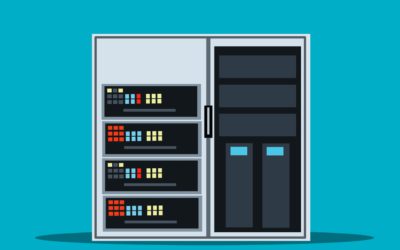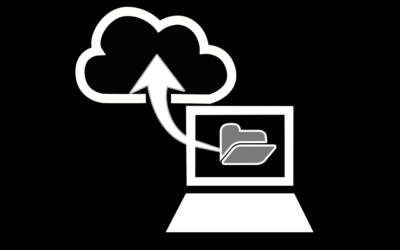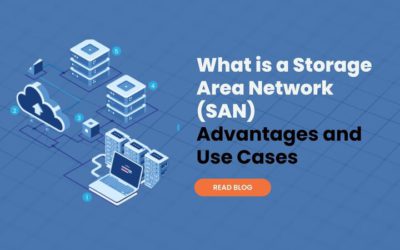Understanding Full, Differential, Incremental, and Synthetic Full Backups
In this blog, we’ll dive into the three primary backup types – full, differential, and synthetic full backups – and their respective pros and cons. Understanding the differences between these types of backups can help you make informed decisions about which method is best for your organization’s backup and recovery needs.
Storage Area Network (SAN)
Storage Area Network (SAN) is a high-performance iSCSI or Fibre Channel block storage network, for structured workloads, with shared pools of resources that are presented to multiple servers. Purpose-built for critical workloads with low latency tolerance and...
Ultimate Guide to JUMBO Frames: Configuration and Best MTU Size
This comprehensive guide covers everything you need to know about JUMBO Frames in networking, including definition, benefits, configuration, potential problems, best MTU size, performance increase, and future trends. Get insights and expert recommendations on how to optimize your network with JUMBO Frames.
What is the shared responsibility model?
Public clouds use the Shared Responsibility Model to assign responsibility of the infrastructure to the CSPs and the security of the data stored in the cloud to the data owner. In this section, learn more about what is the shared responsibility model and how you can use it for your workloads.
What are Immutable Backups and Why are they Necessary?
Public clouds use the Shared Responsibility Model to assign responsibility of the infrastructure to the CSPs and the security of the data stored in the cloud to the data owner. In this section, learn more about what is the shared responsibility model and how you can use it for your workloads.
Private Cloud Storage: What is it, Why Use It, and the Advantages
Public clouds use the Shared Responsibility Model to assign responsibility of the infrastructure to the CSPs and the security of the data stored in the cloud to the data owner. In this section, learn more about what is the shared responsibility model and how you can use it for your workloads.
Structured vs Unstructured Data – What’s the Difference?
Unstructured and structured data are two of the most common data structures business owners create, process, and store. A better understanding of the two enables data owners to select the right data storage infrastructure and effectively leverage their business data....
What are Air-Gapped Backups? How Air-Gapped Backups Work
With their ability to isolate critical volumes from the primary environment, air-gapped networks provide reliable ransomware protection to enterprise workloads – making them a necessary feature for all hyperconverged infrastructure (HCI) and backup and disaster...
What is a Storage Area Network (SAN) – Advantages, Use Cases and How it Differs from NAS
Storage Area Network (SAN) is a high-performance iSCSI or Fibre Channel block storage network, for structured workloads, with shared pools of resources that are presented to multiple servers. Purpose-built for critical workloads with low latency tolerance and...
Video Management System For Beginners
Video Management System For Beginners The Internet Protocol has drastically changed the Video Management system in Surveillance field. The IP Video Surveillance delivers high quality surveillance recordings, fast search and retrievals, easy maintenance and the freedom...
What is Tiered Storage?
What is Tiered Storage? Tiered storage, or tiered data storage, is a storage networking technique where data storage is carried out on various types of storage media based on price, performance, availability and recovery attributes. Storage tiering ensures that hot...
What is a Storage Hypervisor?
In simple terms Storage Hypervisor is a portable software program that can run on a physical server hardware platform, on a virtual machine, inside a hypervisor OS or in a Storage Network. The software offers a comprehensive monitoring function and storage control, in...
Network Attached Storage – Simplified Data Storage Technique
Network Attached Storage - Simplified Data Storage Technique Network Attached Storage (NAS) is a storage technology that allows users to create shared volumes that can be accessed by one or more users. NAS volumes ( NAS Shares) can be accessed by more than one user or...
What is a Logical Unit Number (LUN)?
What is a Logical Unit Number (LUN)? A Logical Unit Number (LUN) is a number used for recognizing a logical unit related to computer storage. A logical unit is a device which can be addressed by computer network protocols like Fibre Channel (FC), Small Computer System...
True Definition of IP Storage
True Definition of IP Storage IP Storage in a generalized way can be termed as utilizing Internet Protocol (IP) in a Storage Area Network (SAN). The Internet Protocol used in the SAN environment will be usually over Gigabit Ethernet. It is usually termed as a...
Disaster Recovery – Vital For Business Continuity Planning
Disaster Recovery - Vital For Business Continuity Planning Disaster Recovery (DR) is a procedure or a process to resume business after an unexpected disruptive event. The disruptive event can be a natural catastrophe, terrorist attack, mechanical errors, human driven...
Data Continuity – The True Essence of Disaster Recovery
Data Continuity - The True Essence of Disaster Recovery Introduction to Data Continuity Data Continuity planning which encompasses disaster recovery, paves way in minimizing the impact of a catastrophe on an enterprise, by making sure that alternate processes...
What is Cloud Computing?
What is Cloud Computing? Cloud Computing is a term used for hosted computing services delivered to the client over the internet. The computing resources can be related to hardware and software and are presented as a utility to the users via a web browser. The service...
What is a Virtual Private Server?
What is a Virtual Private Server? A Virtual Private Server is created by partitioning the physical server into multiple mini servers, made possible by the technology of Server Virtualization. The term Virtual Server is widely used by Internet hosting services and it...
What is Storage Snapshot Technology?
What is Storage Snapshot Technology? Storage Snapshot is an effective data protection feature that also supports data mining and data cloning use-cases. Most storage hardware and software vendors offer storage snapshot technology support, as it offers enables...























